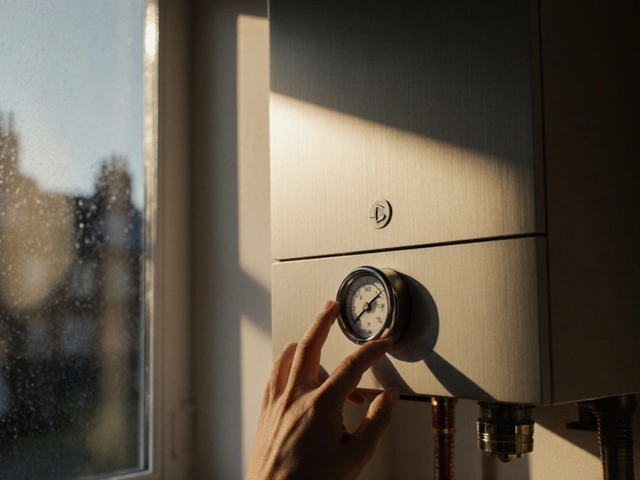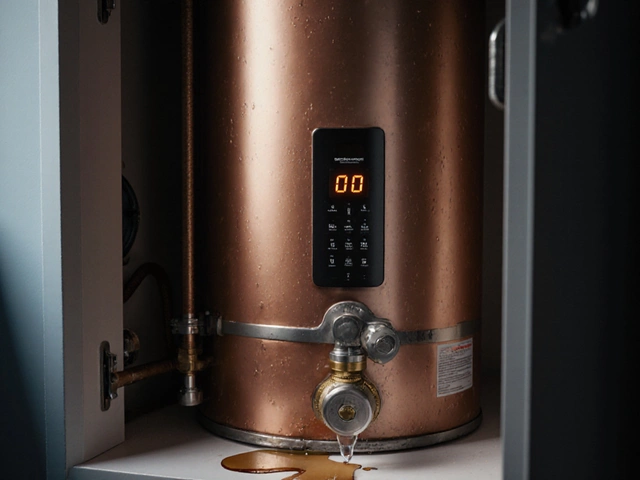Got a kitchen that’s acting up? Most of the time you can sort out the problem yourself without waiting for a technician. Below you’ll find straight‑forward steps for three of the most common kitchen hiccups: an oven that won’t heat, a faulty electric hob element, and a sluggish extractor fan. Grab a screwdriver, read the safety notes, and let’s get your kitchen back on track.
When your oven stays cold, the first thing to check is the heating element. Unplug the oven, remove the back panel, and look for any visible cracks or breaks. A damaged element is cheap to replace – usually under £30 – and you can do it in under an hour. If the element looks fine, the next suspect is the oven thermostat. A faulty thermostat can misread the temperature and shut off heating early. You can test it with a multimeter; a reading of zero or infinity means it’s dead and needs swapping.
Another frequent culprit is a blown fuse or tripped circuit breaker. Before opening anything, make sure the power is off, then check the fuse box. Reset any tripped breakers and see if the oven powers up again. If the oven still won’t heat, it might be a wiring issue inside the control board – that’s when calling a professional is safest.
Electric hobs are great, but a single burner can give up on you. First, turn off the main supply and wait a few minutes for the circuit to discharge. Remove the hob’s top cover – it’s usually clipped or screwed on – and locate the faulty element. Pull the connector off, unscrew the element, and replace it with an exact match (check the model number on the old part). Re‑assemble, turn the power back on, and test each burner. Most people finish this in 20‑30 minutes.
For extractor fans, a loss of suction often means the filter is clogged or the motor bearings are worn. Start by cleaning or swapping the charcoal filter; a good soak in hot soapy water usually restores flow. If that doesn’t help, open the fan housing (again, after disconnecting power) and give the blades a quick wipe. Check the motor for any odd noises – grinding usually means the bearings need greasing or the motor has to go. A fresh motor can be bought for around £50 and fits most kitchen fans.
While you’re tackling these fixes, keep safety front‑and‑center: always unplug appliances, wear gloves, and never force a part that feels stuck. If at any point something feels beyond your comfort level, it’s wise to call Bognor Regis Appliance Repair Experts. They can sort out tricky electrical issues fast, saving you from costly mistakes.
In the end, most kitchen repairs are about spotting the obvious – a broken element, a clogged filter, or a tripped breaker. With a few tools and a bit of patience, you’ll have your oven heating, hob burners glowing, and fan pulling fresh air again. Next time something goes wrong, give these steps a try before you pick up the phone.

Wondering if you should throw out your seven-year-old oven or give it a second chance? This article breaks down when it makes sense to fix an older oven, what problems are easy or tough to repair, and how much money you might actually save. Get straight answers on costs, lifespan, and smart ways to keep your oven running. No fluff—just helpful facts and real advice you can use.

Discover what causes heat pumps to break down, the warning signs, and how to keep yours running smoothly with practical tips for any homeowner.

Step‑by‑step guide to diagnose common boiler problems, covering pressure, thermostat, fault codes, leaks, and when to call a professional.

Spot the top warning signs of a failing hot water heater, from strange noises and leaks to temperature swings and error codes, plus practical fixes and when to call a pro.

A reliable heat pump is essential for maintaining comfort in your home. Some signs indicate that your heat pump might need replacing, such as increased energy bills, inconsistent temperatures, strange noises, old age, and frequent repairs. Understanding these warning signs can help you decide if it's time to invest in a new system.

Discover the essential roles appliances play in our daily lives and learn effective tips for maintaining their efficiency. From refrigerators to washing machines, each appliance features unique mechanics tailored for specific tasks. Grasping these functions is crucial for efficient servicing and longevity. Uncover surprising facts about how appliances work and ground yourself in practical maintenance advice to keep them running smoothly.